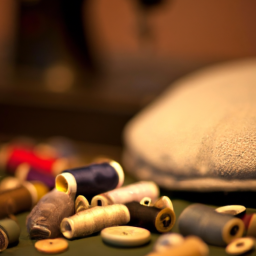
History of Drop Stitch Fabric
The advent of drop stitch fabric revolutionized the world of textiles and ushered in a new era of lightweight, versatile, and highly functional materials. Dating back to the mid-20th century, drop stitch fabric has a fascinating history of development and innovation.
The Inception
The concept of drop stitch fabric originated in the early 1950s, when engineers sought ways to create buoyant materials with minimal weight for use in various industries. The goal was to develop a fabric that could be inflated to a specific pressure while maintaining a flat and rigid structure.
Early Applications
Drop stitch fabric made its initial impact in the aviation industry as it was used to create inflatable aircraft wings. The remarkable strength-to-weight ratio of drop stitch fabric ensured enhanced aerodynamics and fuel efficiency. This innovation paved the way for the production of inflatable structures that could be rapidly deployed in emergency situations.
Textile Innovations and Expansion
Over time, drop stitch fabric found its way into other sectors such as sports and recreational activities. Inflatable boats, kayaks, paddleboards, and even inflatable gymnastics mats were developed using drop stitch technology, providing users with portable and durable equipment that was easy to transport and store.
Additionally, the textile industry embraced the drop stitch technique, leading to the creation of air mattresses, camping mats, pool floats, and even inflatable furniture. The versatility and lightweight nature of drop stitch fabric made it an ideal fit for such applications.
Modern Advancements
With evolving manufacturing techniques, drop stitch fabric has evolved to offer increased strength, flexibility, and customization options. Today, the material is widely utilized in the fields of aerospace, automotive, marine, and architecture.
Drop stitch fabric is often incorporated into the production of lightweight, inflatable structures and insulation systems. It is used to create inflatable wings for drones, inflatable boats and pontoons, and even used in the construction of temporary shelters for disaster-stricken areas.
Conclusion
The history of drop stitch fabric highlights the ingenuity and innovation in the textile industry. From its inception in aviation to its widespread applications in various sectors, drop stitch fabric has revolutionized the world of textiles and provided a highly versatile material that offers strength, lightweight properties, and portability.
As technology continues to advance, we can expect further advancements in the field of drop stitch fabric, opening doors to new possibilities and applications yet to be discovered.




